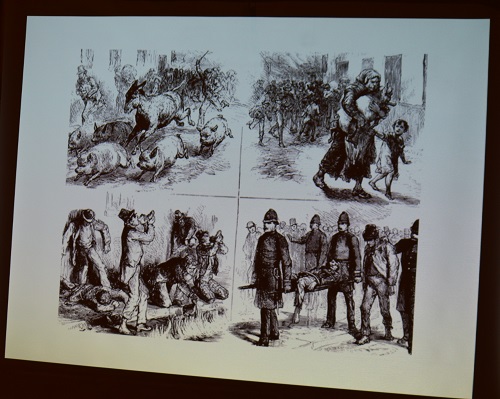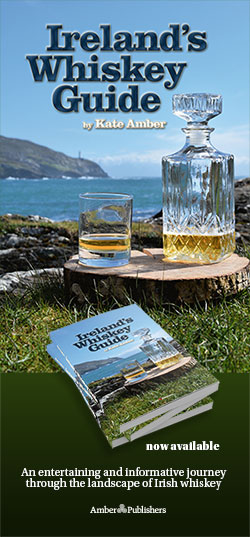 In 1875, Dublin’s Liberties was the epicenter of Ireland’s whiskey distilling in the 19th century. The big whiskey distilleries from that time were all based there: Powers, Jameson, and Georg Roe, amongst others. They also all had warehouses located there which stored the golden liquid. Powers stored their whiskey in an underground cellar. Malone’s malt house and bonded storehouse on Chamber Street alone had about 5,000 barrels of whiskey and other spirits stored there with a value of over six million Euro in today’s money.
In 1875, Dublin’s Liberties was the epicenter of Ireland’s whiskey distilling in the 19th century. The big whiskey distilleries from that time were all based there: Powers, Jameson, and Georg Roe, amongst others. They also all had warehouses located there which stored the golden liquid. Powers stored their whiskey in an underground cellar. Malone’s malt house and bonded storehouse on Chamber Street alone had about 5,000 barrels of whiskey and other spirits stored there with a value of over six million Euro in today’s money.
At 8 pm on June 18th, the alarm was quickly raised when flames were spotted, according to a report in The Irish Times. The fire spread quickly. As the flames reached the wooden casks holding the liquor, they burst open, sending a burning river of whiskey flowing through the streets. The flow measured 2ft wide, 6 inches deep and stretched more than 400m down one side of Mill Street. Livestock was common in the city at the time and the squeals of fleeing pigs added to the chaos as the tenements rapidly emptied of residents. Amid the frightened crowds, however, others gathered along the stream of alcohol- for many, the inferno presented a chance too good to miss:
“It is stated that caps, porringers, and other vessels were in great requisition to scoop up the liquor as it flowed from the burning premises, and disgusting as it may seem, some fellows were observed to take off their boots and use them as drinking cups,” reported The Irish Times on June 21st.
As the city burned, crowds gathered around the edges of the flaming alcohol river and attempted to grab as much of the whiskey as they could, using pots, pans, hats, and boots. In all, 13 people were reported to have died as a result of the fire. None of the deceased perished in the actual flames, nor did they die of smoke inhalation, instead, they died of alcohol poisoning from drinking “freely of the derelict whiskey”.
The Dublin Fire Brigade arrived, under the leadership of Captain James Robert Ingram, who had been a fire officer in the New York Fire Department and was renowned for his “unconventional” strategies to control fires. He sent for soldiers and ordered them to pull up paving stones and pour a mixture of sand and gravel on the whiskey, but he quickly realized that this wouldn’t be enough as the whiskey started to seep through the sand. Instead, he used horse manure! As the burning whiskey met the damp manure it was soaked up and the fire slowly began to subside.
https://www.youtube.com/watch?v=vw_BjCzW92k
How a few moments on June 18th, 1875 changed Dublin’s Liberties
- Details






